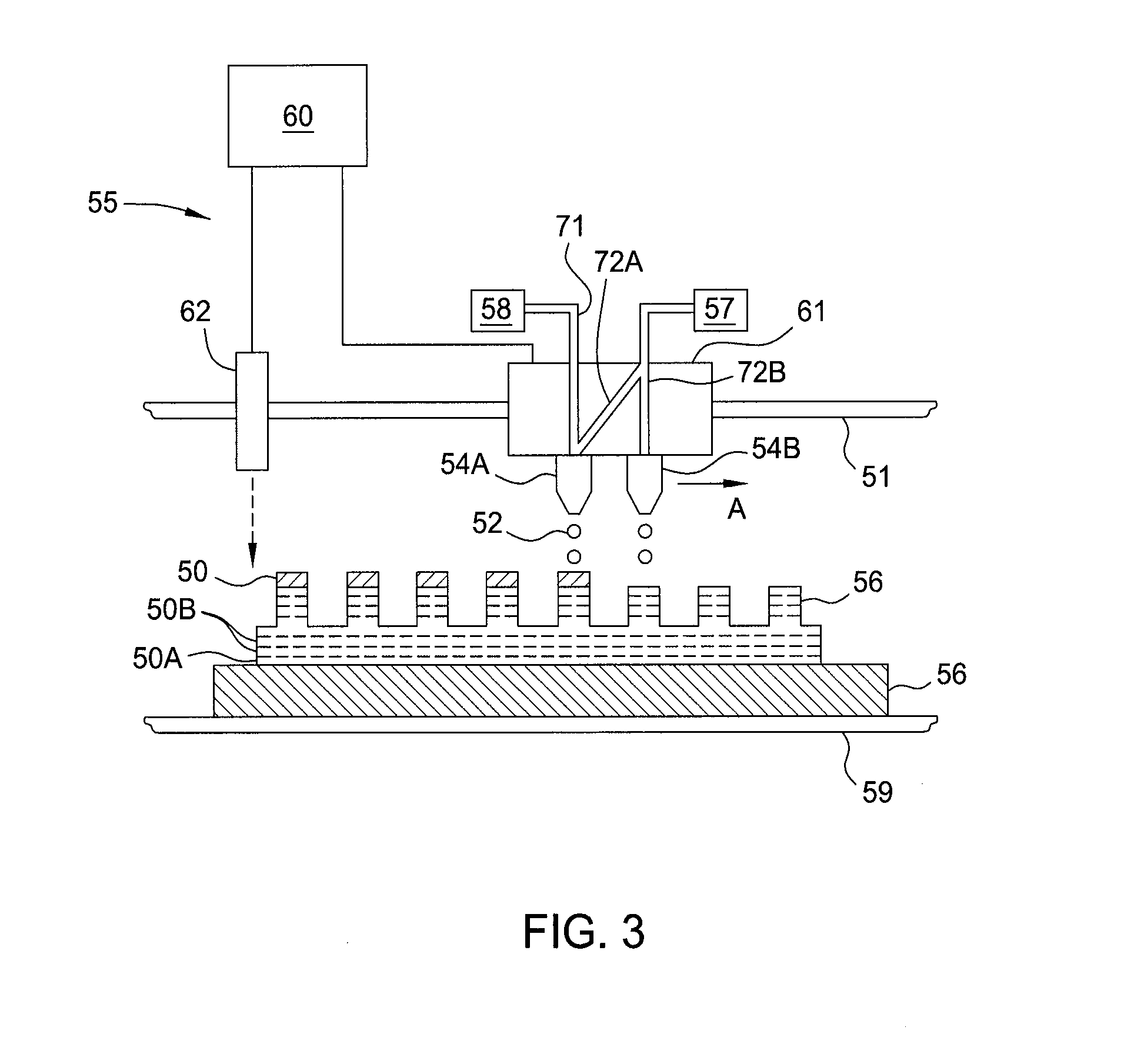Printed chemical mechanical polishing pad
- Summary
- Abstract
- Description
- Claims
- Application Information
AI Technical Summary
Benefits of technology
Problems solved by technology
Method used
Image
Examples
Embodiment Construction
[0019]In order to provide polishing uniformity, a polishing pad needs to form a uniform contact with the substrate being polished, such that uniform pressure can be applied across the substrate surface. A variation in thickness of the pads can create non-uniform pressure across the substrate surface. Even small variations in thickness lead to variations in the applied pressure, and hence non-uniform removal as well as higher defects such as micro-scratches on the substrate surface. This effect is more acute for hard polishing pads, and is also more acute at low pressure polish processes. Although a soft polishing pad can accommodate larger thickness variations, the process of forming grooving in the pad is more likely to generate non-uniformity in soft polishing pads.
[0020]A technique for manufacturing polishing pads that can provide improved thickness uniformity is 3D printing. In a 3D printing process, a thin layer of pad precursor, e.g., a liquid, is progressively deposited and f...
PUM
 Login to View More
Login to View More Abstract
Description
Claims
Application Information
 Login to View More
Login to View More - R&D
- Intellectual Property
- Life Sciences
- Materials
- Tech Scout
- Unparalleled Data Quality
- Higher Quality Content
- 60% Fewer Hallucinations
Browse by: Latest US Patents, China's latest patents, Technical Efficacy Thesaurus, Application Domain, Technology Topic, Popular Technical Reports.
© 2025 PatSnap. All rights reserved.Legal|Privacy policy|Modern Slavery Act Transparency Statement|Sitemap|About US| Contact US: help@patsnap.com



